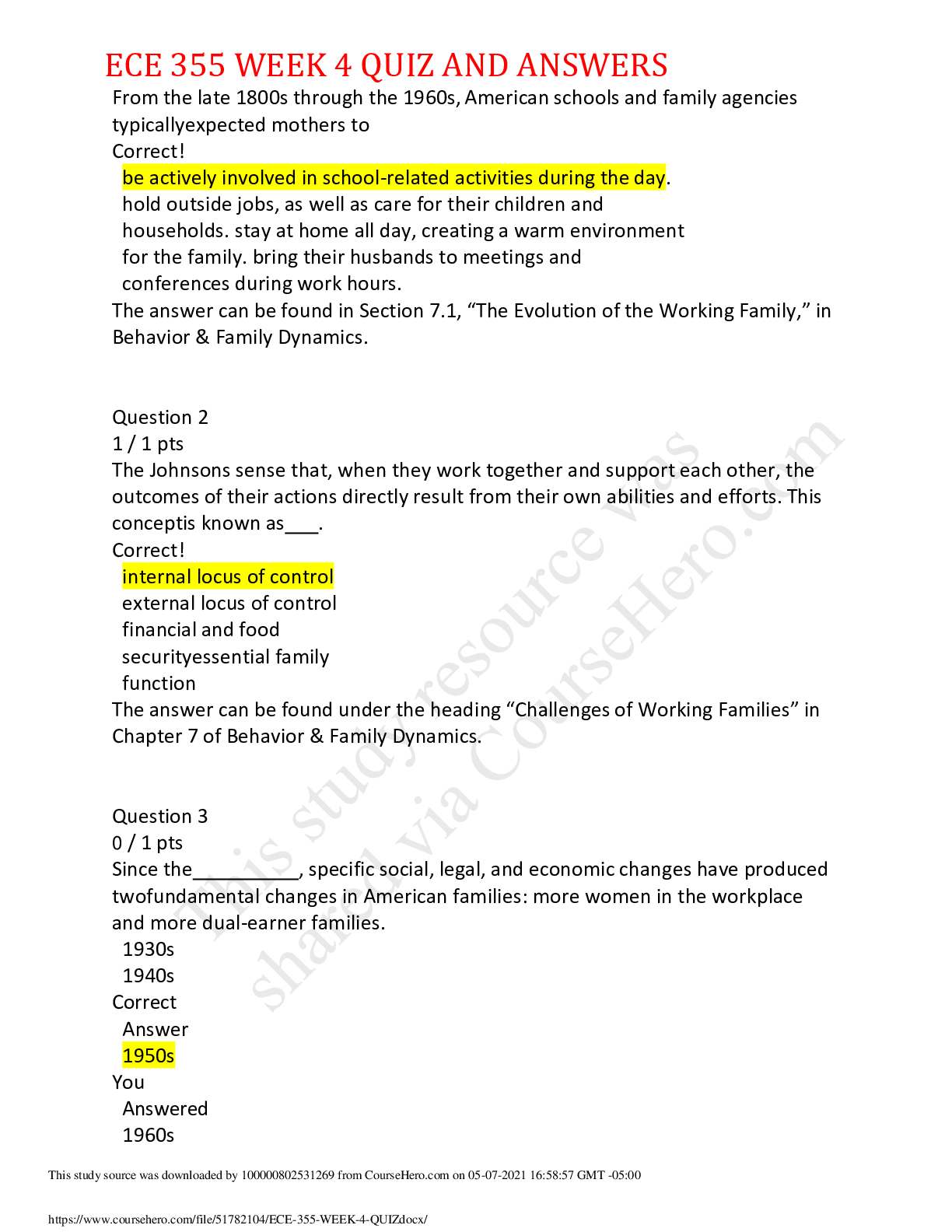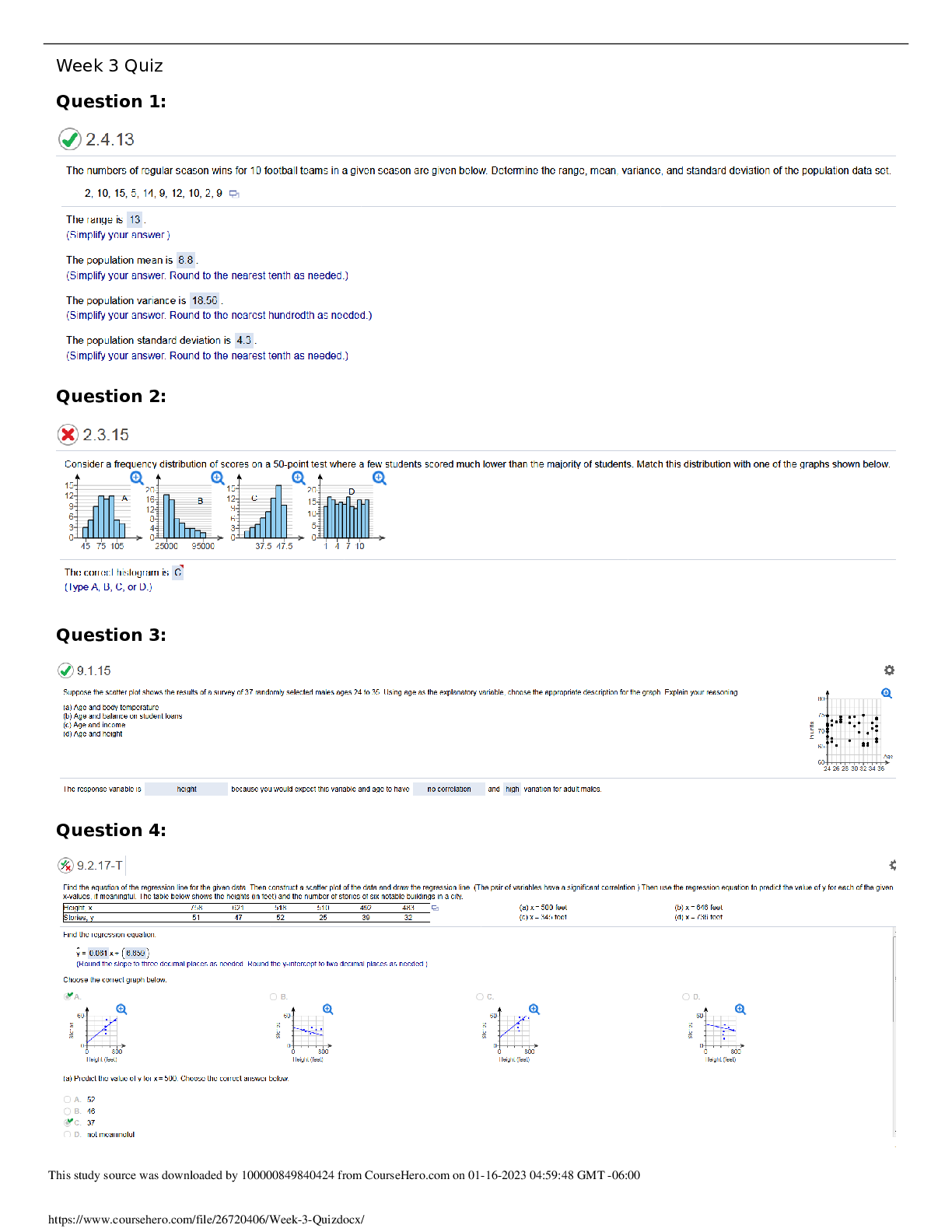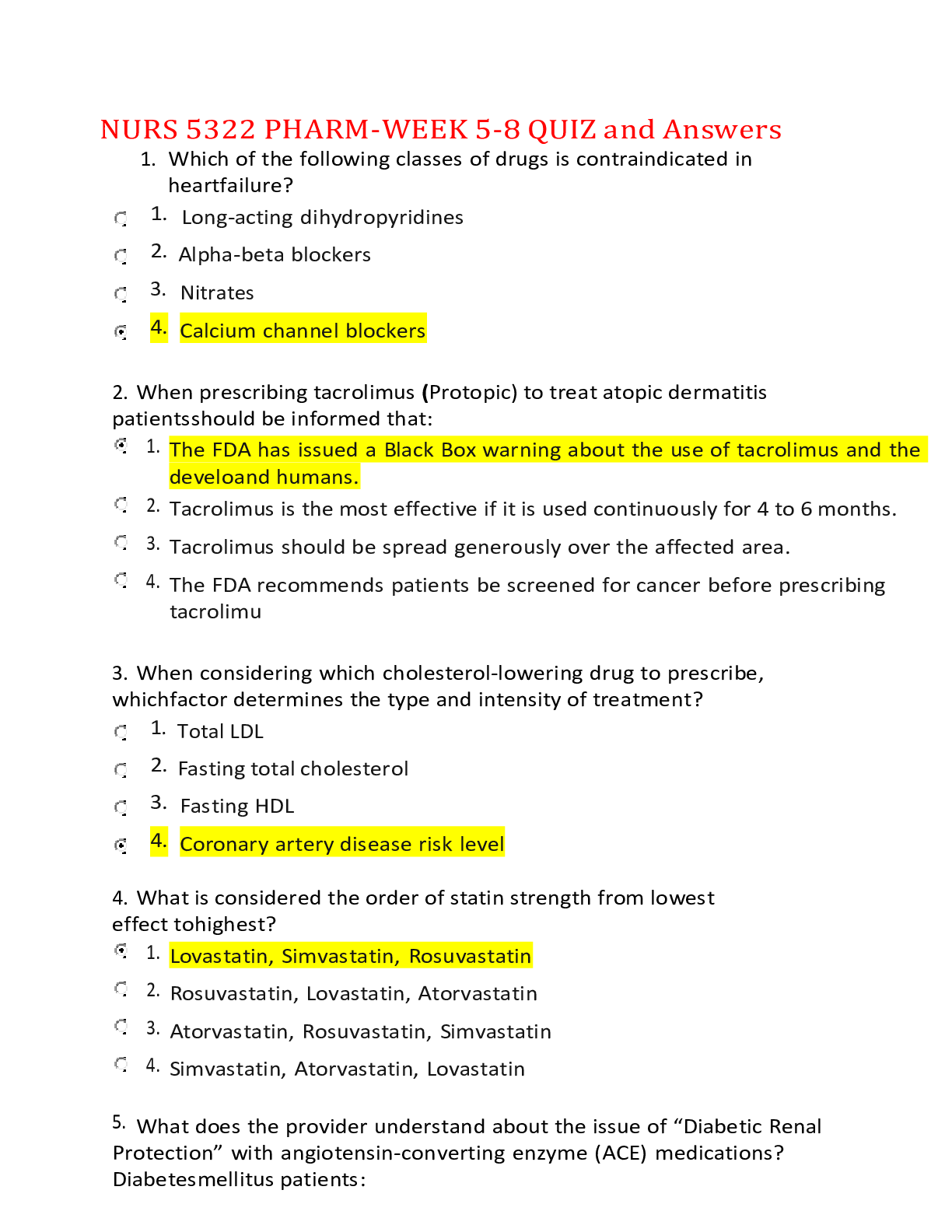N675L WK2 Quiz and Answers,100% CORRECT
Document Content and Description Below
N675L WK2 Quiz and Answers WEEK 2 1. An older patient with COPD is experiencing dyspnea and has an oxygen saturation of 89% on room air. The patient has no history of pulmonary hypertension or con... gestive heart failure. What will the provider order to help manage this patient’s dyspnea? Breathing exercises 2. An adult patient who had pertussis immunizations as a child is exposed to pertussis and develops a runny nose, low-grade fever, and upper respiratory illness symptoms without a paroxysmal cough. What is recommended for this patient? Azithromycin daily for 5 days 3. A 22 year old tall, thin and athletic man comes into your primary care clinic complaining of pain with breathing and progressively worsening shortness of breath. In order of sequence, what will be your next steps? Obtain more history, auscultate the lungs and send pt to the ER for a stat CXR and further evaluation. 4. An adult develops chronic cough with episodes of wheezing and shortness of breath. The provider performs chest radiography and other tests and rules out infection, upper respiratory, and gastroesophageal causes. Which test will the provider order initially to evaluate the possibility of asthma as the cause of these symptoms? Spirometry 5. A patient is seen in clinic for an asthma exacerbation. The provider administers three nebulizer treatments with little improvement, noting a pulse oximetry reading of 90% with 2 L of oxygen. A peak flow assessment is 70%. What is the next step in treating this patient? Admit to the hospital with specialist consultation 6. A patient comes to an emergency department with chest pain. The patient describes the pain is sharp and stabbing and reports that it has been present for several weeks. Upon questioning, the examiner determines that the pain is worse after eating. The patient reports getting relief after taking a friend’s nitroglycerin during one episode. What is the most likely cause of this chest pain? Esophageal pain 7. The parent of a 4-month-old infant who has had an episode of bronchiolitis asks the provider if the infant may have an influenza vaccine. What will the provider tell this parent? The rest of the family and all close contacts should have the influenza vaccine. 8. The major laboratory abnormality noted in patients who have pneumococcal pneumonia is: Leukocytosis: Increased white count is typical in patients with bacterial pneumonia. Eosinophils can be increased in patients but developed pneumonia secondary to irritating substances such as toxic gas. Leukopenia is an ominous finding, especially in older patients, indicating poor prognosis 9. A high school athlete reports recent onset of chest pain that is aggravated by deep breathing and lifting. A 12-lead electrocardiogram in the clinic is normal. The examiner notes localized pain near the sternum that increases with pressure. What will the provider do next? Recommend an NSAID 10. A patient has a cough and fever and the provider auscultates rales in both lungs that do not clear with cough. The patient reports having a headache and sore throat prior to the onset of coughing. A chest radiograph shows patchy, nonhomogeneous infiltrates. Based on these findings, which organism is the most likely cause of this patient’s pneumonia? Mycoplasma 11. A previously healthy patient develops influenza which is confirmed by RT-PCR testing and begins taking an antiviral medication. The next day, the patient reports increased fever and cough without respiratory distress. The patient’s lungs are clear and oxygen saturations are 97% on room air. What will the provider recommend? Symptomatic treatment with close follow up in clinic 12. Which of the following infections can cause a "barky" cough? Croup 13. What is the most common complication of influenza? Bacterial Pneumonia 14. What is the most common cause of pneumonia and people of all ages? S. pneumoniae 15. What does peak flow meter measure? Expiratory flow 16. An adult develops chronic cough with episodes of wheezing and shortness of breath. The provider performs chest radiography and other tests and rules out infection, upper respiratory, and gastroesophageal causes. Which test will the provider order initially to evaluate the possibility of asthma as the cause of these symptoms? Spirometry 17. Which are causes of pleural effusions? CHF, bronchiectasis, breast cancer [Show More]
Last updated: 1 year ago
Preview 1 out of 5 pages
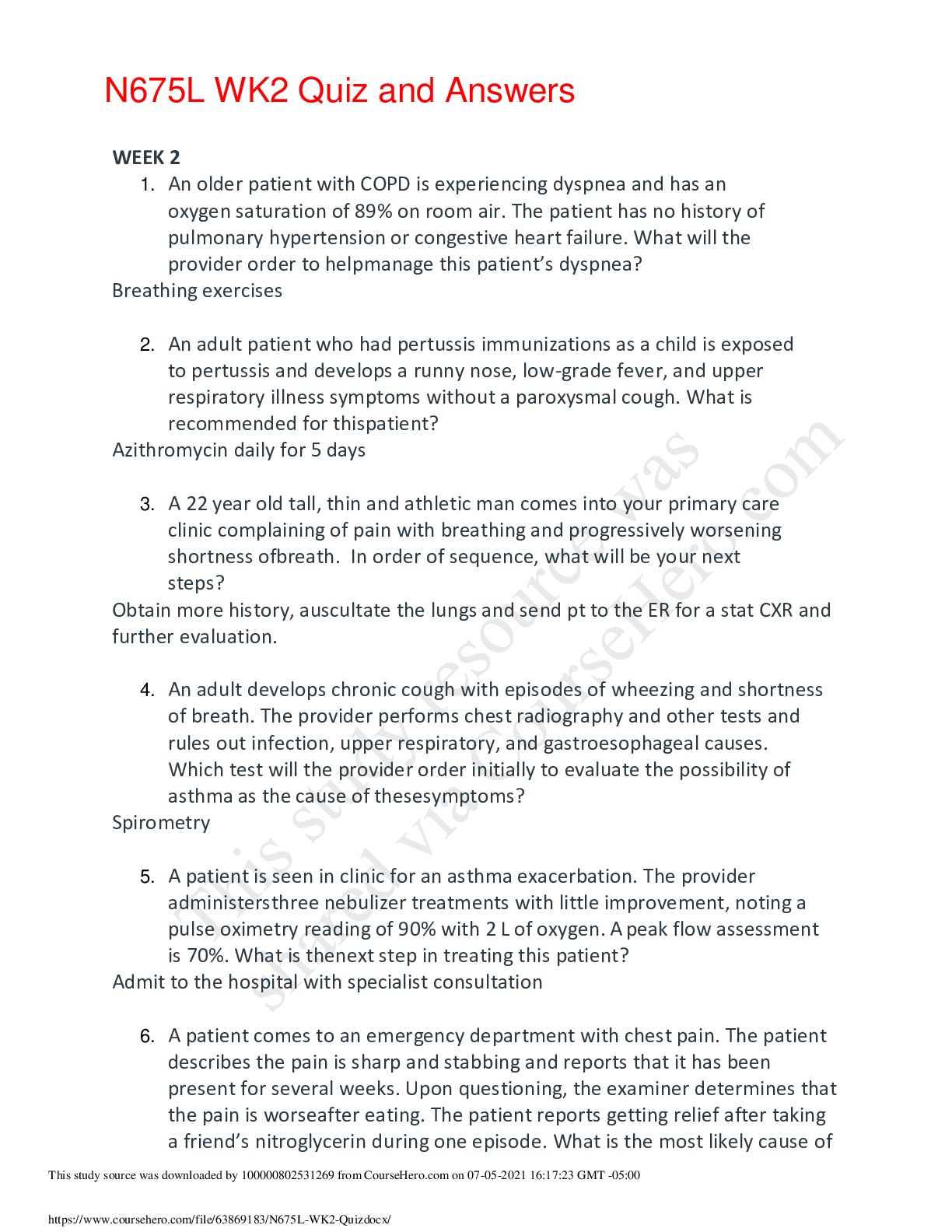
Reviews( 0 )
Document information
Connected school, study & course
About the document
Uploaded On
Jul 06, 2021
Number of pages
5
Written in
Additional information
This document has been written for:
Uploaded
Jul 06, 2021
Downloads
0
Views
24




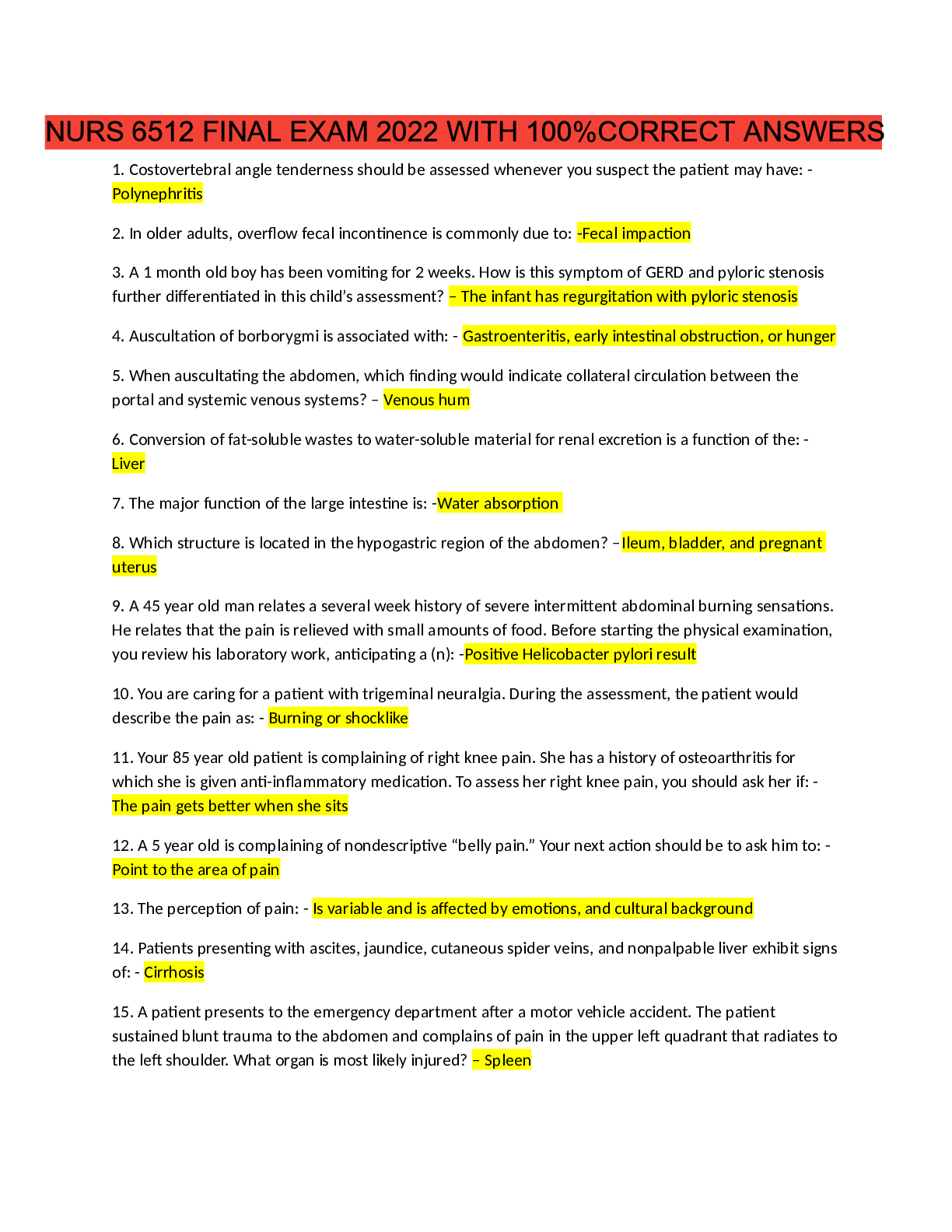

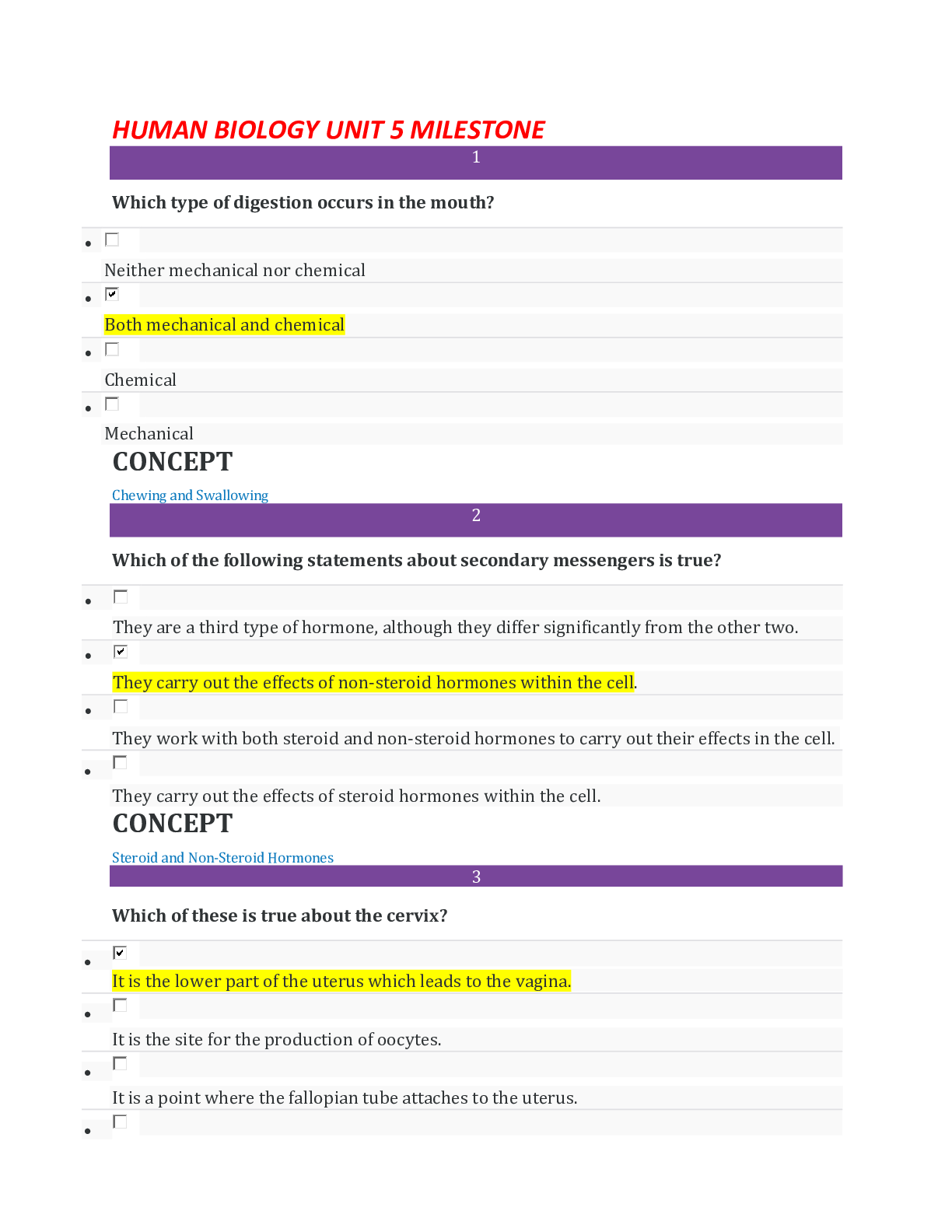











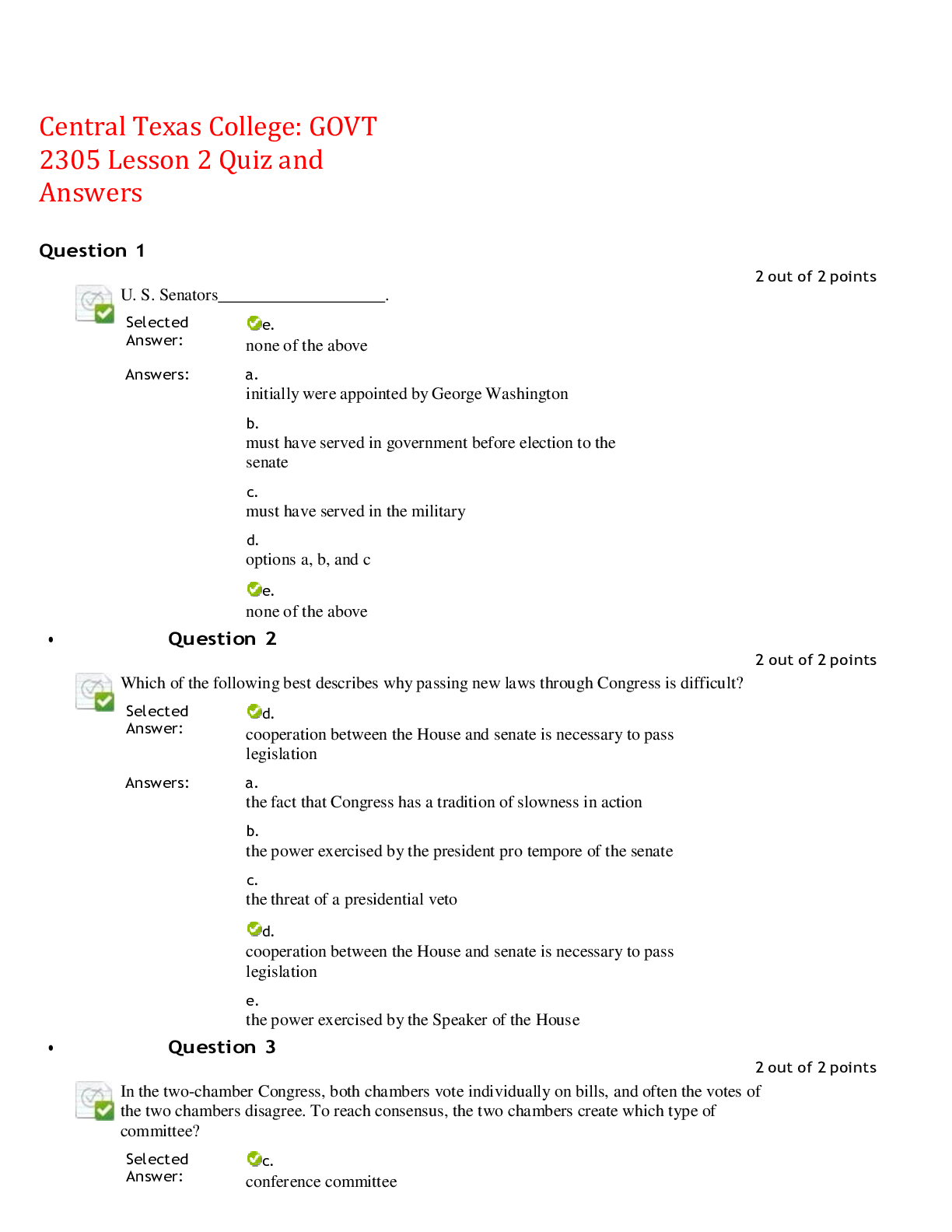
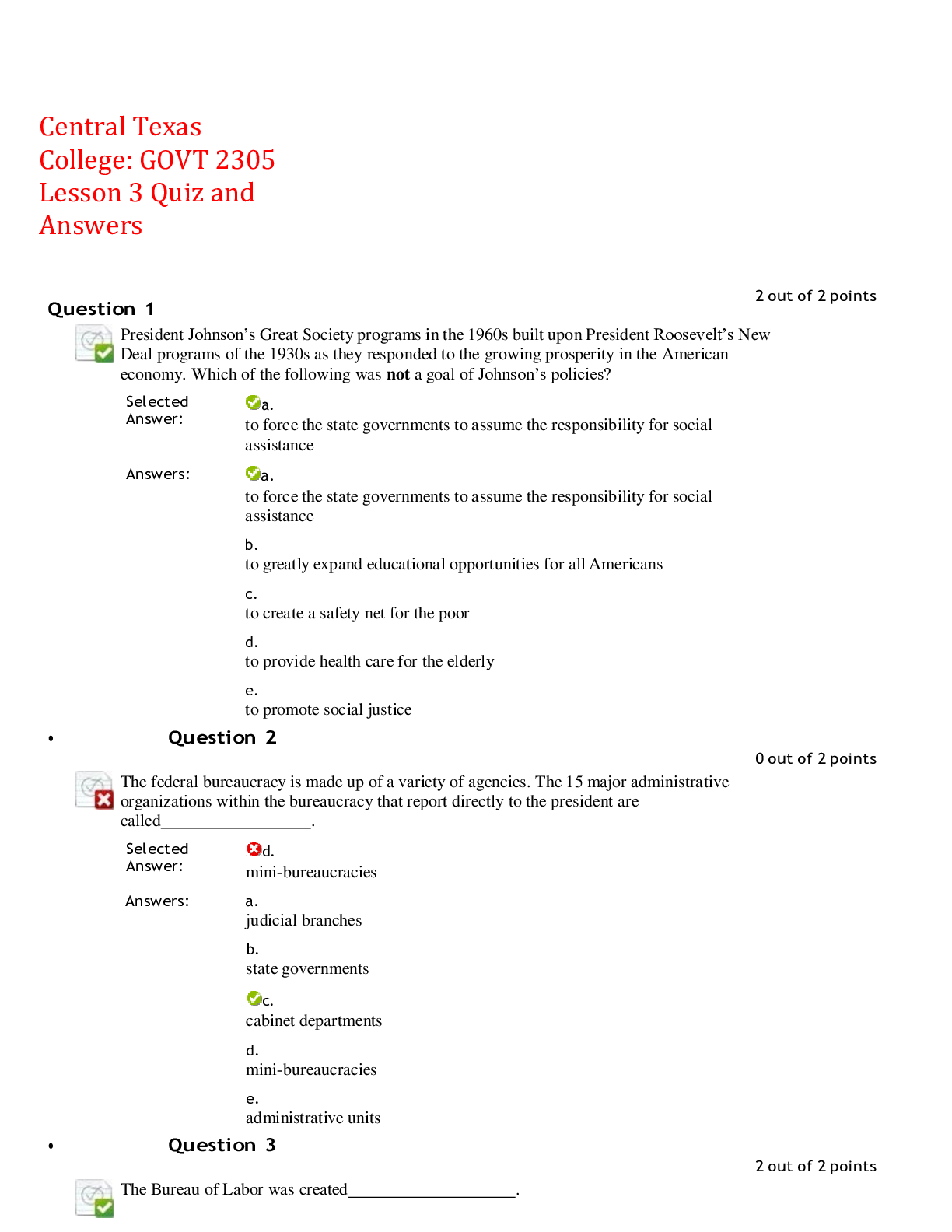

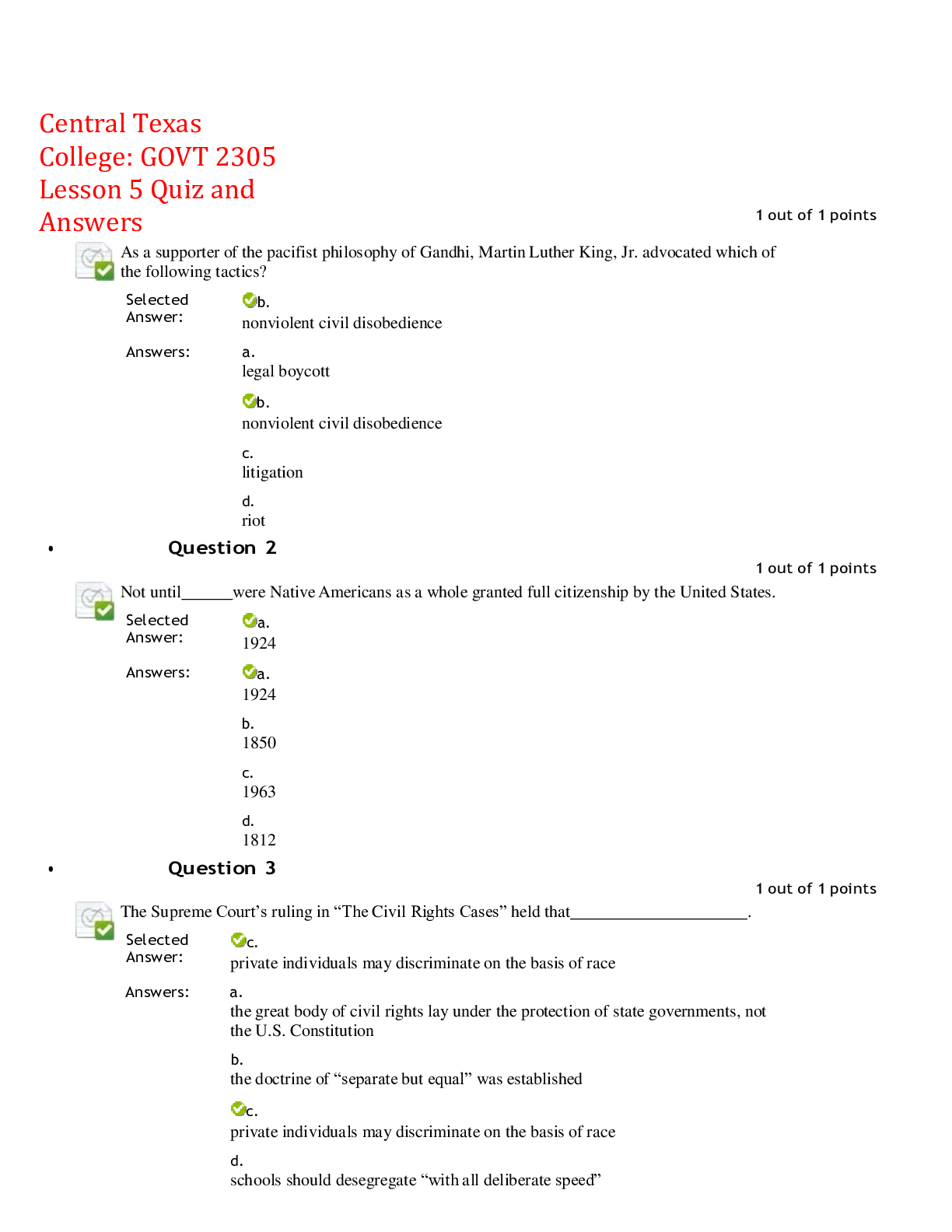



.png)
